CELESTE CHANDLER

BIOGRAPHY
Melbourne based, Tasmanian born painter Celeste Chandler completed a Masters degree in Fine Art at the University of Tasmania (2003) and a PhD at the Victorian College of the Arts (2014). She has held solo exhibitions in Melbourne, Sydney and Brisbane and been included in curated exhibitions throughout Australia. Chandler has been awarded the the Linden Art Prize Studio Prize (2015), The Sunshine Coast Art Prize (2013), the inaugural Windsor Art Award (2013), the R&M McGivern Prize for painting (2009) and was highly commended in the Portia Geach Prize (2013).
Chandler has twice been awarded the Canadian Elizabeth Greenshields Scholarship (1998 & 2004), allowing her to undertake a six-month residency in Paris at the Cite International des Arte in 1999. She was awarded a Martin Bequest Travelling Scholarship in 2003. Chandler has been a finalist in the Ramsay Prize at the Art Gallery of South Australia (2017) and the Doug Moran Prize (2017).
Chandler is the recipient of an Australia Council Grant (2017) and an Australia Council Emerging Artist Grant (2004), an Australian Postgraduate Award (2001) and was awarded a Melbourne Research Scholarship (2009) to undertake her PhD at The Victorian College of The Arts. Chandler’s work is held in the collections of the Queensland Art Gallery, the University of Queensland Art Museum, Redcliff City Gallery, Maroondah Art Gallery and the Sunshine Coast Council.
ARTIST CV
DOWNLOAD CV
WORKS
CONTACT GALLERY FOR PRICE INFORMATION
PAST EXHIBITIONS
ALL WE HAVE IS RIGHT NOW
6 TO 20 APRIL 2022
OPENING SPEECH BY ANNE WALLACE
EXHIBITION PRESS
In the Studio: Celeste Chandler
"I've had to find a way to work amongst the chaos of life."
When I speak to Melbourne-based artist Celeste Chandler about her upcoming show at Nicholas Thompson Gallery, 6 to 30 April, it's from her kitchen-cum-studio. Prior to a couple of years ago, Chandler had a large studio and painted on a large scale. The studio was something she thought she could never give up - but due to a combination of circumstances, including the pandemic and her cancer diagnosis, Chandler has had to recalibrate.
During the pandemic, many of us share this feeling of our lives having been contained to the domestic space. Your experience has been exacerbated by your experience with cancer.
My life has shrunk down in the last two years - with homeschooling, the pandemic. Instability of working space is a huge issue, increasingly so with real state in places like Melbourne and Sydney. When I lost my studio, it really pulled the rug out from under me. I was also recovering from a massive surgery and, for the good part of two years, wasn't able to paint. It was the longest I've ever gone without it. There was a huge part of me that just wasn't there.
I've always had really particular requirements in the studio - privacy, quiet, the right angle of a wall to the window. I've always been someone who could never paint around other people. I've had to let go of that. I've undergone a really big change in how I'm working, because I need to. If I don't work, I feel like I've lost my identity. I've had to find a way to work amongst the chaos of life.
How has that impacted your work?
It has become about looking in. During the pandemic, our homes have become our worlds. The work I've made before has been about creating a pictorial space that is right on the cusp of real space, but my recent works are more like looking inward to a virtual world. What I love about painting is that it's the first virtual space, the first space that humans created which exists outside of real space. Paintings contain time. They relate image physically to space and time, and anchor it in a way that our fast paced, hyperconnected world doesn't.
Do you feel like you're trying to capture or prolong a moment in time?
I think I'm trying to capture an experience, but it's more than that. Painting has this way of being able to hold an image, a moment or a period of time, both in the brush marks and in the image. That moment perpetually exists. I'm still working out how to title the show, but I'm thinking about the idea that all we have is right now. Mortality is something I've really had to think about, so capturing something of the moment of lived experience feels important.
It's been a period in which you've had to confront your own mortality and bodily experience, yet your own body features less in this body of work. There's a shift to images of homes and landscape.
My image does feature sometimes, but in a different way - such as the back of my head. I'm there but disguised; it's still my embodied experience; it's just less literally my body. What I've gone through has been quite confronting, in terms of my body, and I'm not quite ready to process that in my work at this point.
I think of houses as bodies, a container of life. When you see a house stripped back, there'd not much to them really. The life happens inside. It's less a sentimentality to the architecture and more to the fact that these containers of life get taken apart and put back together again. I feel an affinity to that.
Sophia Halloway is a writer and critic based in Sydney
Art Almanac April 2022, p 44 to 47
LADIES NIGHT
23 MAY TO 10 JUNE 2018
EXHIBITION STATEMENT
Ladies’ Night is an exhibition of new painting by Melbourne artist Celeste Chandler. It closely follows a solo institutional exhibition of the artist’s painting at Bayside Arts and Cultural Centre, Brighton, Melbourne produced with the support of The Australia Council through an ‘Arts Projects for Individuals’ grant awarded in 2017. The series of exhibitions will be realised in a publication currently in development.
OPENING SPEECH BY PROFESSOR SU BAKER
EXHIBITION PRESS
Shape shifting
Review by Robert Nelson in 'The Age' Newspaper, 29 May 2018
EXHIBITION ESSAY
Celeste Chandler: fragmentary masquerade
Masks and masquerade are usually adopted for purposes of anonymity, for social permissiveness and transgression of laws and social mores. In the recent series Be my eyes, 2018, Chandler presents herself wearing or holding painted masks that are fragments of painted portraits. Sometimes the masks include painted eyes so we are presented with a gaze that is not the artist’s own but rather her rendition of another’s gaze. In other works the eyes are cut away, permitting Chandler to gaze out towards us from behind the protective façade of the mask; her expression by turns wary, shy or tentative. In yet other instances, she forecloses this possibility by averting her gaze or even closing her eyes – denying the opportunity of direct engagement. This self-conscious experimentation with the power of the gaze takes up portraiture’s most potent aspect: namely, the relationship it establishes between subject and viewer. Yet, this is a gaze mediated by the mask. It points to the concealments – metaphorical and literal – we adopt in even our most seemingly direct engagements.
Chandler also uses wigs: Ladies' Night, 2018, includes several palpably fake blonde wigs, bobbed or curled, while the earlier Heroic Paintings series, 2016, focused on wigs sculpted from shaving cream that emulated hairstyles from historic portraits both male and female. These wigs function differently to the masks. They do not conceal identity so much as alter it. They allow her to adopt different personae, to role-play and ‘try on’ certain poses like so many garments on a rack. Fluidity is the key here. These works recall the gender fluidity of such early twentieth-century cross-dressing painters as Romaine Brooks and Gluck, but here fluidity is put to a different purpose. Chandler is not so much drawn to cross-dressing and costume for their transgressive potential. Rather, by adopting an overtly masculine pose she critiqued her own tendency of ‘trying to fit the mould of a male painter’.
Do the recent Ladies' Night wig paintings reverse this trend? Certainly they evince a hyper-femininity: hair softly frames the face, shoulders are exposed, eyes open wide, or teeth lightly catch a lower lip in an attitude of vulnerability. These are the poses of the artist’s muse as well as the magazine model known from countless iterations of femininity in popular culture. They do not tally with historic examples of female artists’ self-portraits – I am thinking here of Artemisia Gentileschi’s energetic Self Portrait as an Allegory of Painting, 1630, in which the artist’s head forms a concentrated fulcrum to the parabolic curve of her arms (the right stretched up and out to the canvas, the left downwards to support her palette), or Élizabeth Vigée Le Brun’s rather more fashion-conscious series of self portraits that no less bespeak of the artist as a working professional. Chandler’s self-portraits include none of the usual artistic paraphernalia; they shun self-promotion. Instead in the recent works she subjects herself to the same scrutiny that is usually directed upon the artist’s model, role-playing the object of our gaze. Whether enacting the heroic male or the desirable female model, she draws our awareness to the artifice of these roles and to the pendulum of power relations they enact.
A second key aspect to these works is their evident fascination with the fragment. This might seem a perverse claim given the highly finished nature of most of Chandler’s work. To clarify: her paintings are not in themselves fragments but rather careful representations of fragments. By definition fragments refer to a larger, pre-supposed whole object from which they came. They derive their meaning from the identity of this whole to which they belong. In the case of a portrait fragment, they speak of a whole identity that can be named and – to some extent – known. Some fragments are louder than others: an eye, for instance, usually tells us more than an ear (unless you make a practice of studying ears and other less significant details – as did the nineteenth-century Milanese art historian Giovanni Morelli, whose technique would influence Sherlock Holmes and Sigmund Freud among others). But all portrait fragments ultimately refer back to a person and an identity.
However, there is also a temporal aspect to the fragment. It is not simply a piece belonging to a larger whole; it is instead an artefact that cannot be reconstructed and made whole because other pieces are missing. The ideal whole object no longer exists. Of course in the wake of psychoanalysis and post-structuralist deconstruction we know that the unified whole self never really existed anyway. There is ‘nothing like a transcendental subject’; instead ‘the self’ is merely ‘a collection of impressions’.[1] In this respect, the fragment is essentially an impression – a fleeting glimpse of one aspect of the person’s self. This also chimes with the Romantic concept of the fragment as representing a never-ending coming-into-being. The Romantics valorised the fragment for this very reason; the process of becoming and the unfinished opus magnum were of greater potential than the finished product.
In the Be my eyes series Chandler uses fragments of two portraits whose identities are lost. The portraits – one of a woman, the other a man – are both dated 1859 and were donated in 1976 to Bayside City Council. The donor believed that the woman depicted was the artist of both portraits but did not know either of their identities (the dated inscription on the male portrait has apparently failed to yield further clues). The attribution to a single hand is questionable; the positioning and lighting of the sitters’ faces, the treatment of the eyes (the scumbled yellows and pinks around the man’s eyes, his averted gaze and lack of highlights to the pupils), and the background (the inclusion of foliage and props in the female portrait versus the gradated grey backdrop in the male portrait) all differ considerably. Nevertheless they are both evidently Victorian-era portraits. Both also seem somehow ‘colonial’: there is a certain stiffness and – at least in the half-length female portrait – an absence of anatomical precision that suggest a lack of academic training coupled with an awareness of distance from the source of legitimating institutions. Perhaps I am merely reading into them. Regardless, the number of unknowables surrounding the pair of portraits serves Chandler’s purpose well, leaving them open to her retrospective remixing. By using fragments of this anonymous pair of portraits, Chandler creates a double loss: the physical act of fragmentation and excision, or breakage, compounds the slippage in memory that brought about the loss of identity. The second loss, the excision, reiterates and underscores the original loss, the rendering anonymous of the sitters and their artist or artists, rendering it all the more poignant.
Poignancy is coupled with strangeness. This strangeness is born of Chandler’s collaging fragments to create composites that are by turn absurd and uncanny. For instance the visceral nature of the gaze, like a slap on the cheek, is literalised in Be my eyes 6, where the artist’s face and torso are papered with cut-out eyes from the Bayside portraits. Yet Chandler’s collages differ from early Surrealist collage. These are not the productions of a bricoleur, or an experiment in automatism, but rather a form of painted performative collage. To wit: after painting her series of facial and bodily fragments Chandler cuts them out, poses with them arranged before her own face or body, photographs herself and then paints the resulting composition. In The Arrangement she clutches a jumbled profusion of disarticulated limbs as well as two painted cut outs of her own be-wigged head and torso. Her painted self-profile gazes up in open-mouthed surprise at her ‘real’ face – staring at what we feel must be Chandler’s ear, concealed as it is behind a blonde bob. In This Woman’s Work she holds four arms painted in different skin colours, with one cautionary finger held up to her lips. The performative aspect of composing herself for the camera is re-enacted on canvas. Chandler’s self-conscious awareness of this performative aspect is reflected in her use of popular song titles (Fleetwood Mac’s Sentimental Lady, 1972, and Kate Bush’s This Woman’s Work, 1988), which present – in lyric music and video – an overt idealisation of feminine gentleness and self-sacrifice. She too performs these different ideal feminine qualities, trying them on, mixing them up.
Fragmentation, collage, performance and photography offer the means by which Chandler trials these different roles. Masks, costumes, wigs and cut-outs are her visual props. Together they present us with a striking exploration of gender roles and expectations in contemporary society, as well as a nuanced and thoughtful meditation on portraiture’s continued capacity to communicate meaningfully in today’s world.
Jane Eckett
University of Melbourne
May 2018
[1] Jacqueline Lichtenstein, ‘The fragment: elements of a definition’, in William Tronzo, ed., The Fragment: An Incomplete History, Los Angeles: Getty Research Institute, 2009, p. 128.
YOU MAKE ME FEEL MIGHTY REAL
22 OCTOBER TO 13 NOVEMBER 2016
ARTIST STATEMENT
It has been twenty years since I fell for the romance and mystique of painting. This year the collision of two realisations about myself as a painter stopped me in my tracks. The first was the release of The Countess Report, showing the statistical disadvantage Australian women artists continue to face. It was stunning to think that my chances of being shown in large institutions or written about in publications were significantly less because I am female.
The second was the realisation that, in many ways, what I have aspired to achieve creatively and professionally as a painter, what fascinates and intrigues me, what I fell in love with was a model of making, a way of living as an artist and a visual language that was ostensibly male. That in a weird way, for all these years I was trying to fit the mold of a male painter. In art history terms this is no surprise and I am very aware of the critique undertaken by feminist and performance artists since the 1960’s. Rather it was my own sense of identity and how I have functioned as an artist that suddenly seemed questionable. This image of myself attempting to be something I am not struck me as funny, pathetic, heroic, sad, beautiful and poignant.
It occurred me that this was not just reflective of my particular moment or my gender but indicative of contemporary life in general. We live in the space between what we are and what we are not, but we are always becoming or stretching to fit another role, image, relationship, identity that we mold and edit to fill our expectations or someone else’s. Is it all an illusion? Is it in this space between perception and desire that our identities really lie, not in the external manifestation? These questions led me back to two ideas that have preoccupied me for some years: the heroic and the romantic in contemporary art. Romance and heroism are all about perception and desire.
So in this exhibition I set out to explore the idea of the heroic figure in painting. This exhibition begins with two paintings I made in 2014 titled I feel for you 1 and I feel for you 3 [1]. Depicting a heavily bearded man (my partner Andrew) obscured by shaving cream, these works explore how the cream becomes sculptural form and also an absence or erasure that intensifies the tactile sensations of the revealed features and textures. The heroic inference of the beard and its hipster revival echoes a romantic ideal of masculinity and these paintings have opened up some really key questions in my work.
The two other groups of work shown here, Painted Lady 1-3 and Heroic Painting 1-15 began with three simple parameters: my face, shaving cream and paint application. As the images developed the construction of male facial hair and my acting out became more playful. I though of all the heroic male archetypes I could remember from art history and from old films including saints, heroes, soldiers, dandies, philosophers, prophets, martyrs and artists – essentially all the things that I am not and cannot be – and how these could be suggested just through shape, expression, posture and lighting.
As a counterpoint I then started work on constructing female heroic archetypes and discovered that they were considerably more limited in range beyond the saint, martyr and courtesan and that the painting had a completely different quality. Much less comic, these images blurred the role-play and my own identity.
Perhaps the thing that I love most about painting is that as you stand in front of a canvas it unfolds and reveals itself to you. In both the making and the looking it is a real exchange in real time and at its best it can make us feel mighty real.
[1] In 2014 I completed my PhD, titled ‘The Embarrassment of Sincerity: the changing state of contemporary painting’. These works were the conclusion of that project and the beginning of this one.
NEWS

CELESTE CHANDLER 1977 – 2023
It is with great sadness that Nicholas Thompson Gallery marks the passing of Celeste Chandler. In addition to being an exceptionally talented painter, Celeste was intelligent, humourous, generous and a delight to work with since joining the gallery in its first year. She was passionate about art, devoted to her family and inspiring in her…
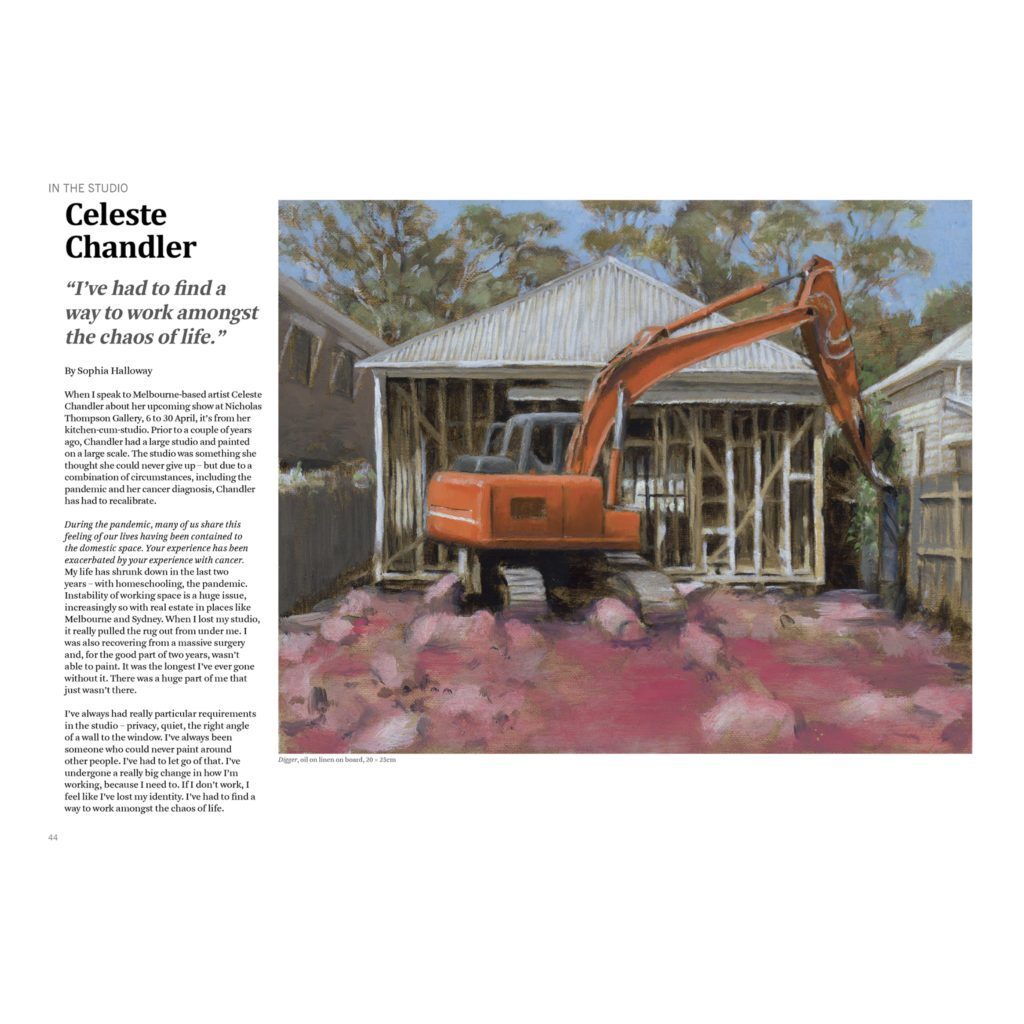
CELESTE CHANDLER STUDIO PROFILE BY SOPHIA HALLOWAY IN ‘ART ALMANAC’, APRIL 2022
In the Studio: Celeste Chandler “I’ve had to find a way to work amongst the chaos of life.” When I speak to Melbourne-based artist Celeste Chandler about her upcoming show at Nicholas Thompson Gallery, 6 to 30 April, it’s from her kitchen-cum-studio. Prior to a couple of years ago, Chandler had a large studio and…
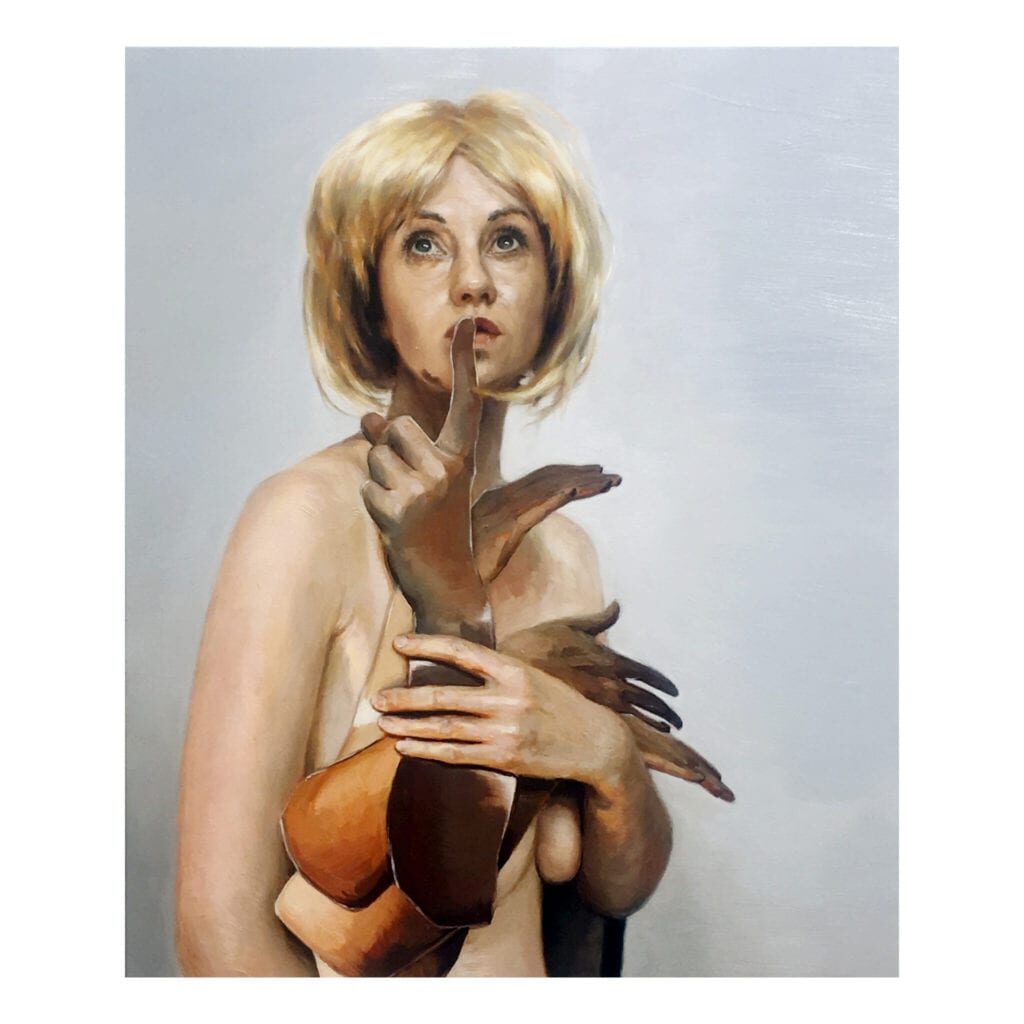
CELESTE CHANDLER FINALIST IN THE ST KEVIN’S ART SHOW 2019 WITH PAINTING ‘THIS WOMAN’S WORK’ CURRENT TO 27 MAY

CELESTE CHANDLER’S EXHIBITION REVIEWED IN ‘THE AGE’ BY ROBERT NELSON
Shape shifting At Nicholas Thompson Gallery, Celeste Chandler also makes me think of riotous rituals of shape shifting, albeit in the demure language of realist painting. Her Ladies’ night shows the artist with male masks over her face or false limbs in front of her body; and a suite of photographs shows the artist with further foamy…

CELESTE CHANDLER IN ART ALMANAC’S EXHIBITIONS
Celeste Chandler’s solo exhibition ‘be my eyes’ pushes the limits of portraiture and traditional oil painting. Her introspective portraits conflate the boundaries between reality and illusion, the historical and the contemporary. Chandler directly responds to two anonymous historical portraits in the Bayside art collection, creating an intriguing and compelling installation of paintings that highlight…

Celeste Chandler included in Briony Downes’ article ‘Creative Building Blocks’ for Art Guide Australia
Childhood is often characterised as a time of play and exploration. But for many artists these early experiences are a kind of apprenticeship for their careers in art. Briony Downes asked artists Kate Rohde, Tanya Schultz, Patrick Hall, and Celeste Chandlerabout making stuff as children. At some point in our lives, we’ve all been asked what we want to…








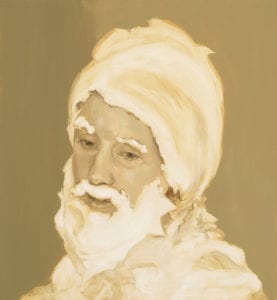






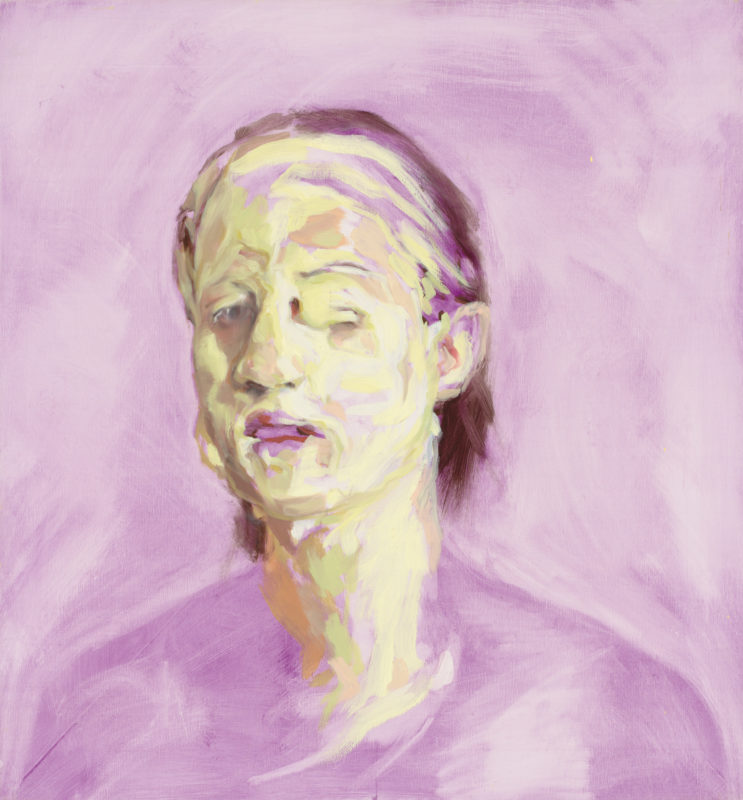
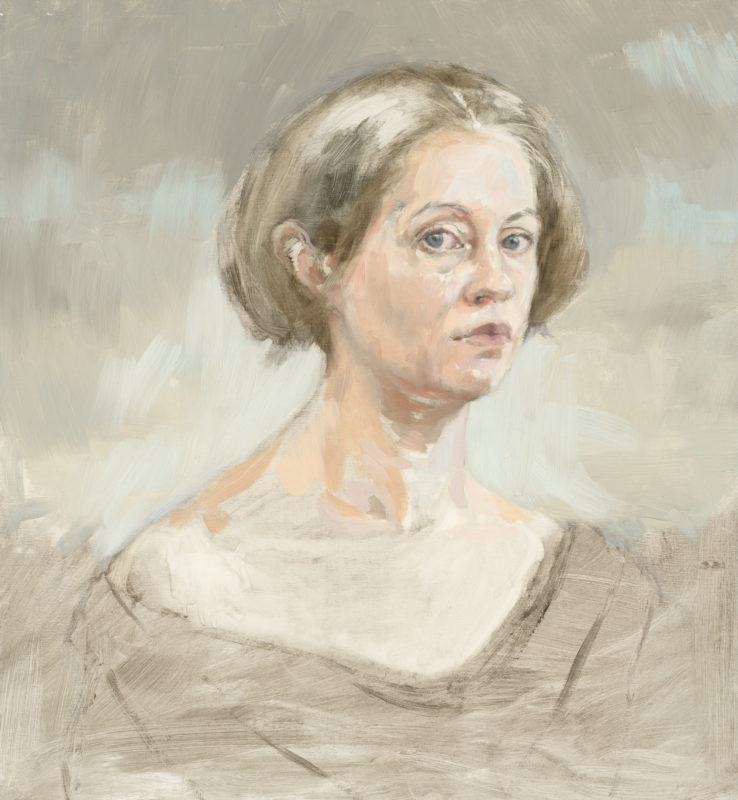


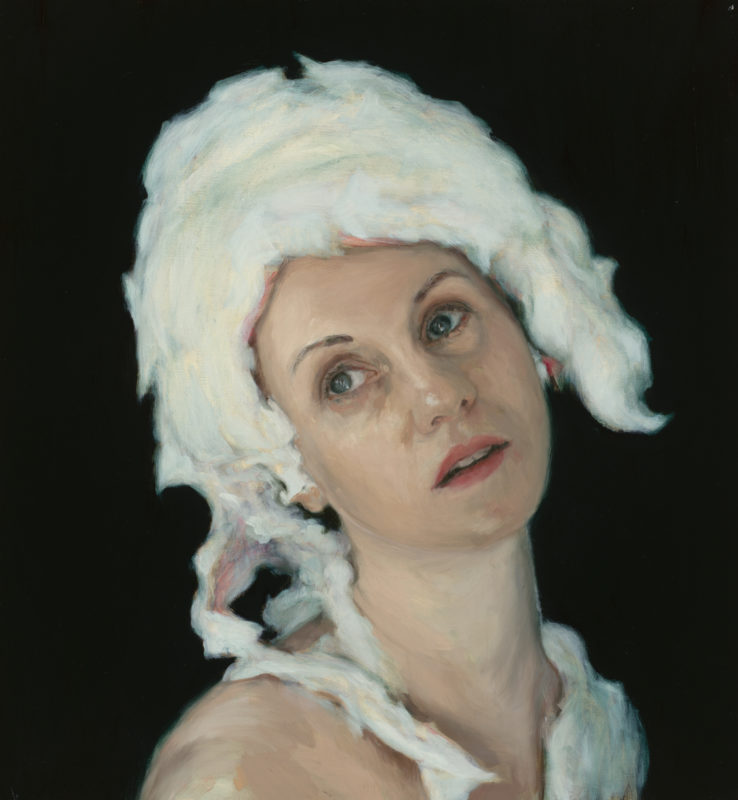



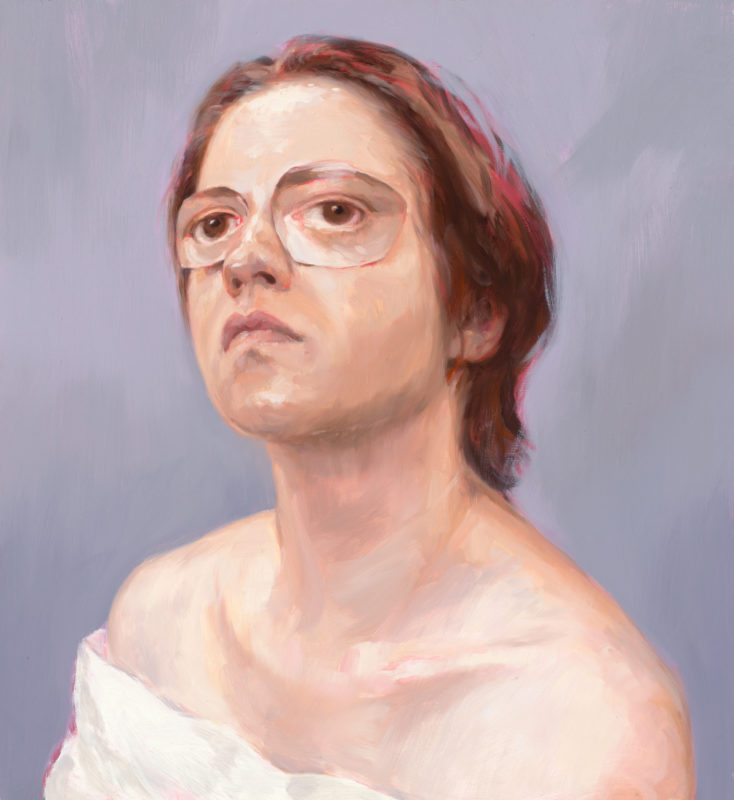



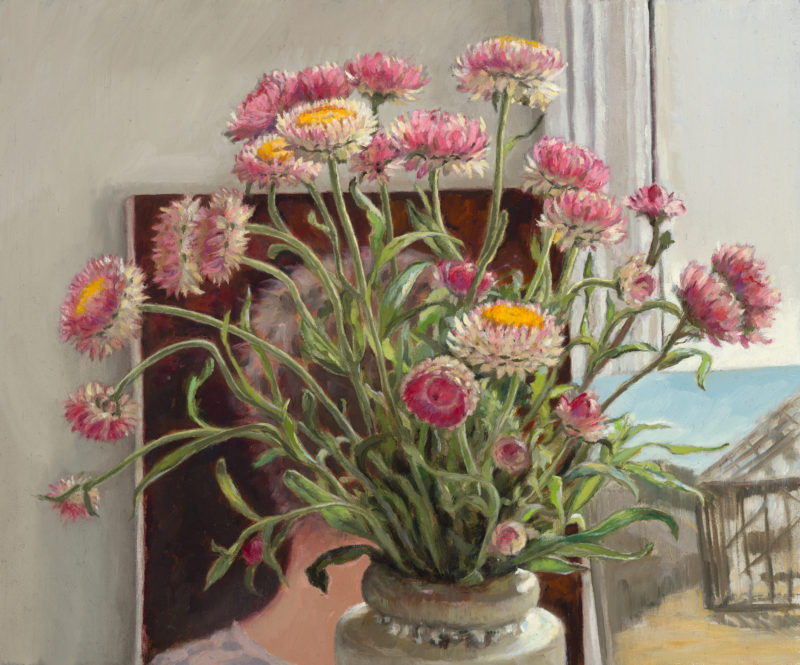







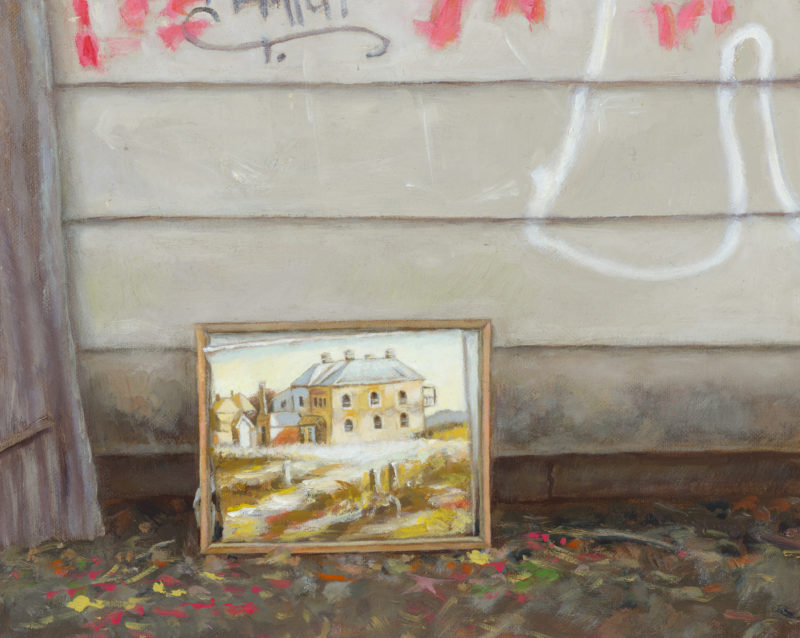






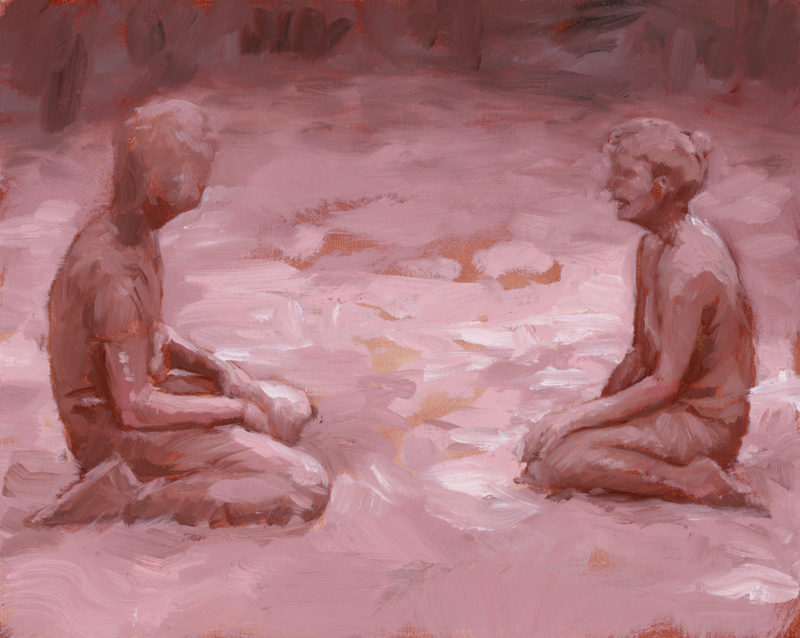





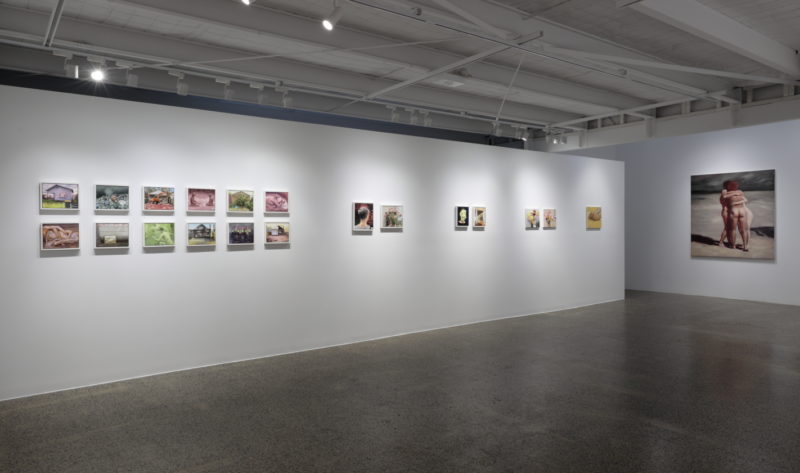
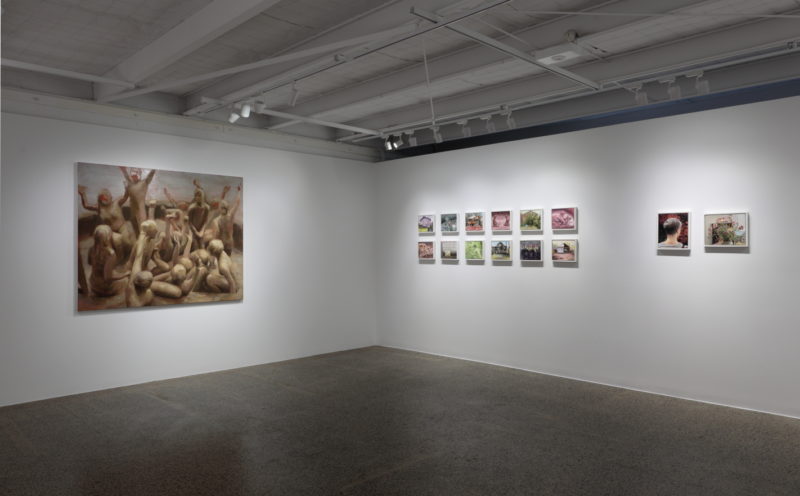


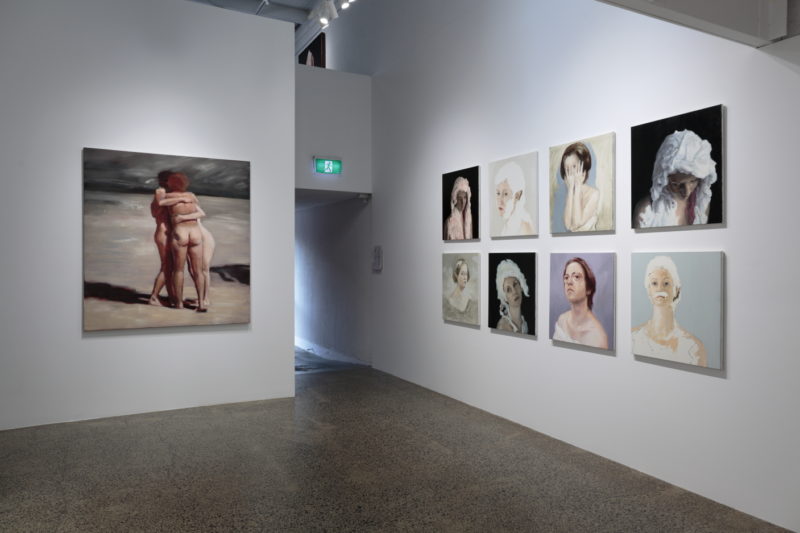



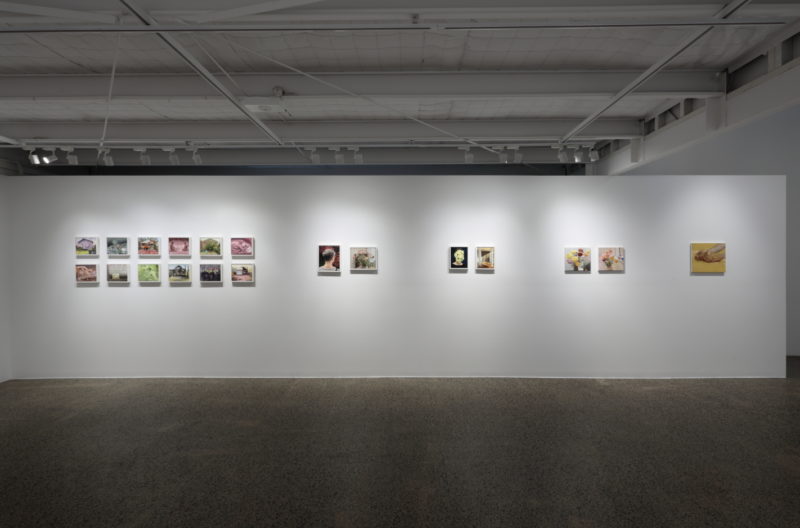





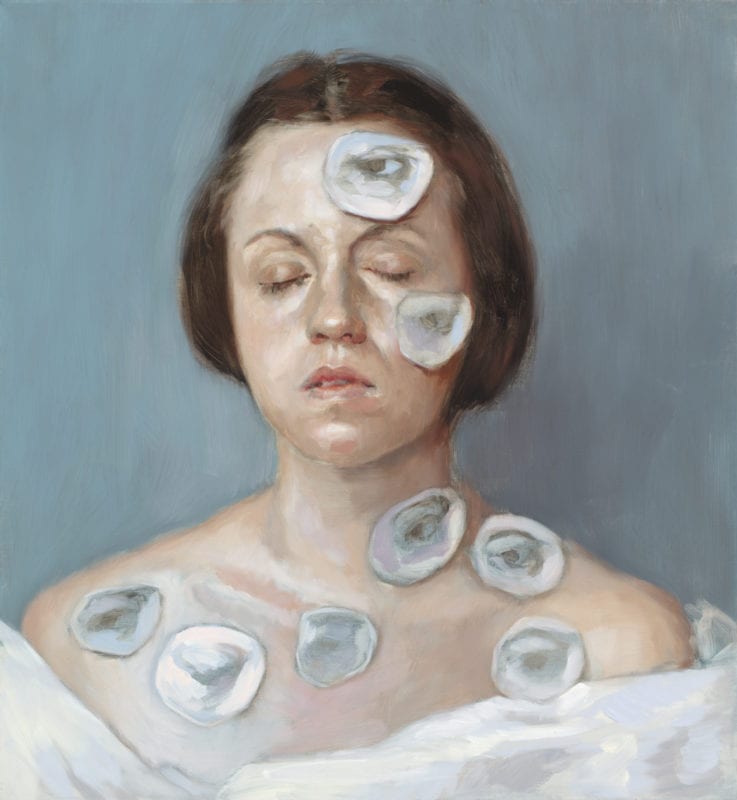


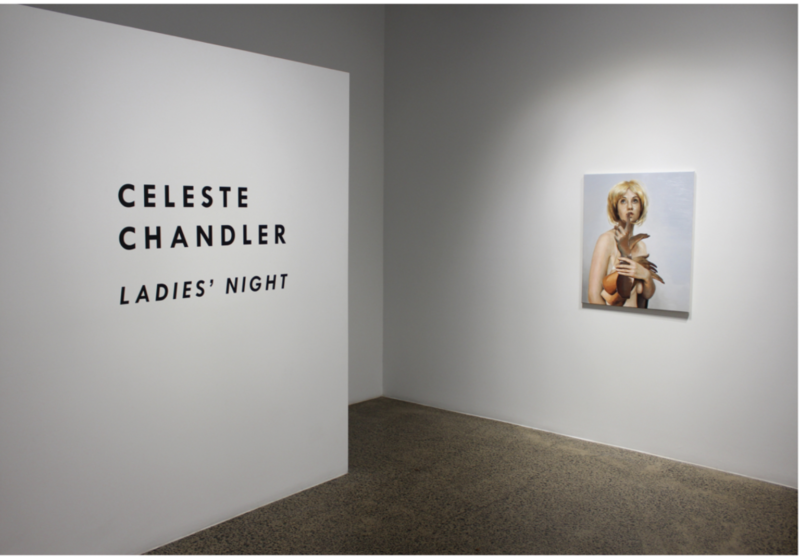


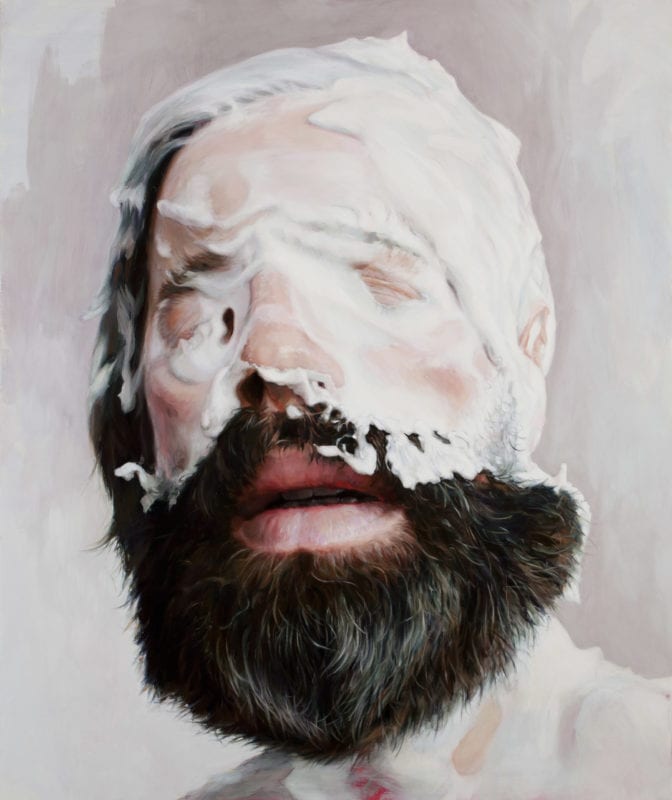
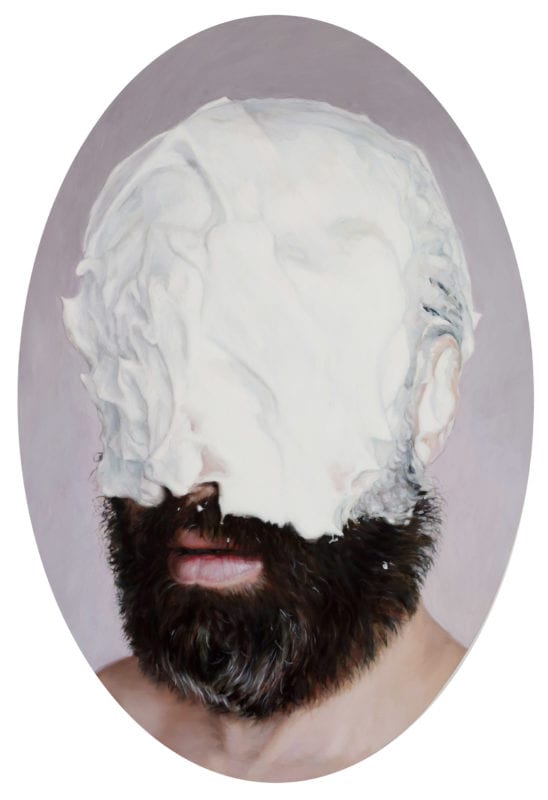






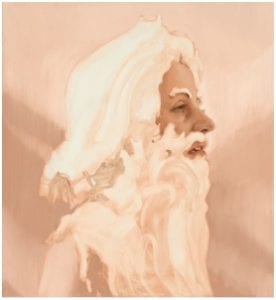

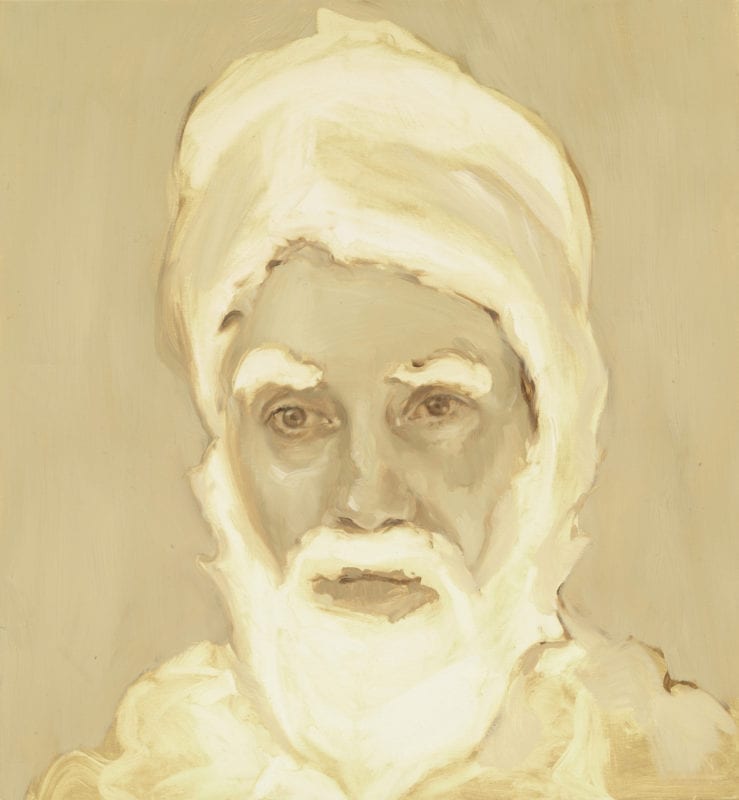
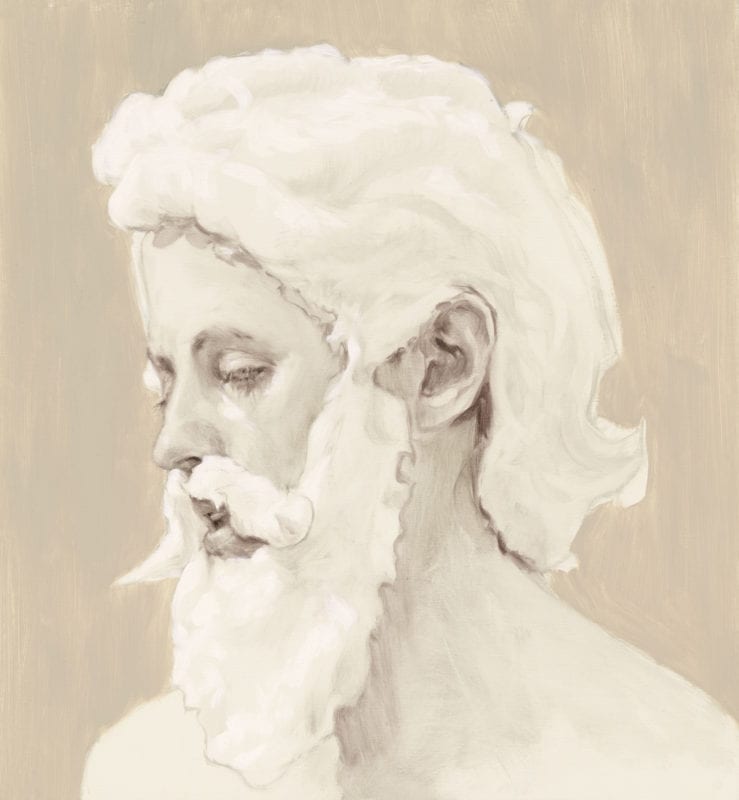
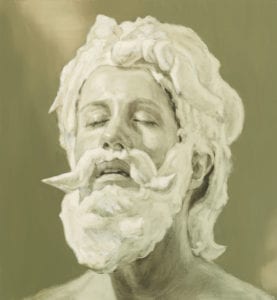

![[Group 1]-Custom Name_DSC7371_Custom Name_DSC7375-5 images-1 [Group 1]-Custom Name_DSC7371_Custom Name_DSC7375-5 images-1](https://www.nicholasthompsongallery.com.au/wp-content/uploads/Group-1-Custom-Name_DSC7371_Custom-Name_DSC7375-5-images-1-800x532.jpg)




